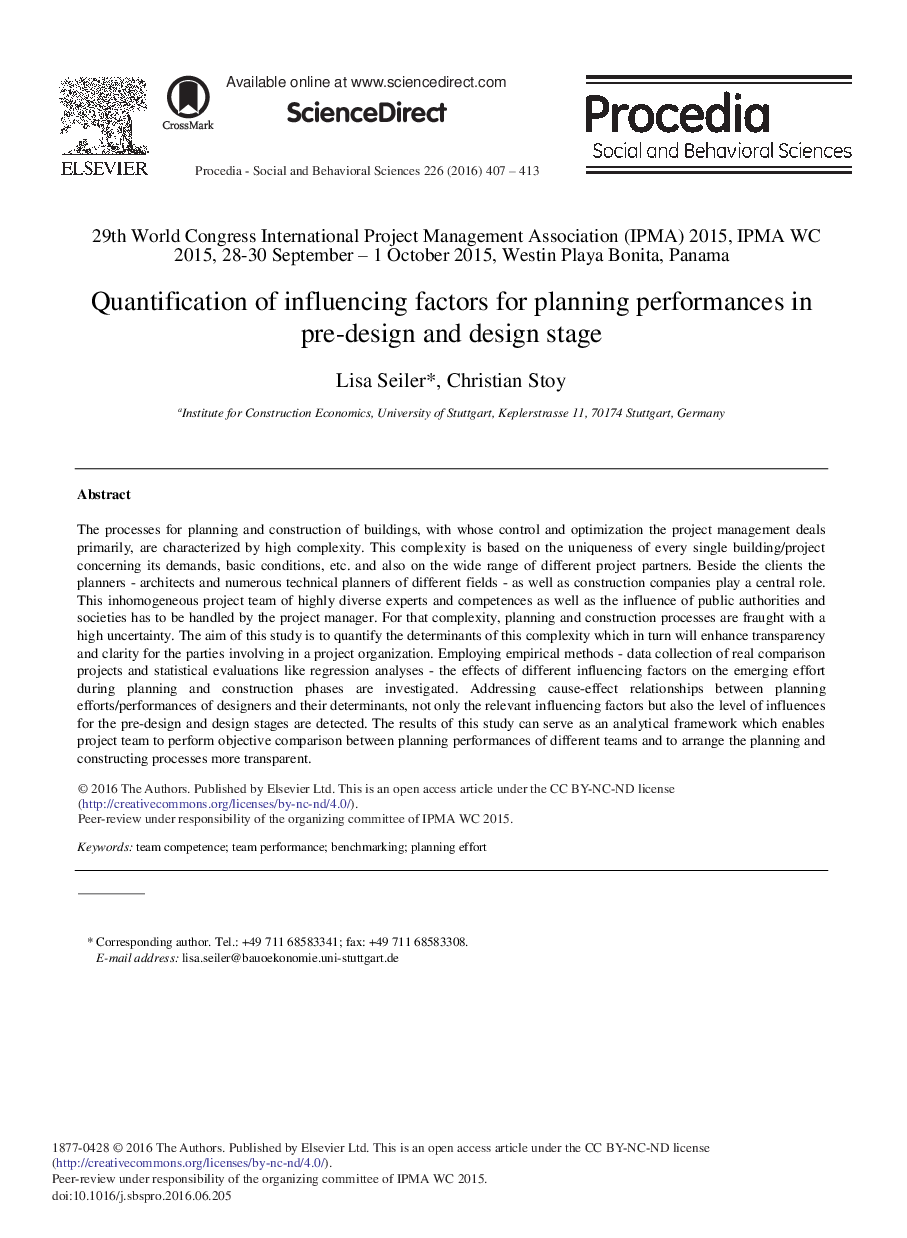| Article ID | Journal | Published Year | Pages | File Type |
|---|---|---|---|---|
| 1107513 | Procedia - Social and Behavioral Sciences | 2016 | 7 Pages |
The processes for planning and construction of buildings, with whose control and optimization the project management deals primarily, are characterized by high complexity. This complexity is based on the uniqueness of every single building/project concerning its demands, basic conditions, etc. and also on the wide range of different project partners. Beside the clients the planners - architects and numerous technical planners of different fields - as well as construction companies play a central role. This inhomogeneous project team of highly diverse experts and competences as well as the influence of public authorities and societies has to be handled by the project manager. For that complexity, planning and construction processes are fraught with a high uncertainty. The aim of this study is to quantify the determinants of this complexity which in turn will enhance transparency and clarity for the parties involving in a project organization. Employing empirical methods - data collection of real comparison projects and statistical evaluations like regression analyses - the effects of different influencing factors on the emerging effort during planning and construction phases are investigated. Addressing cause-effect relationships between planning efforts/performances of designers and their determinants, not only the relevant influencing factors but also the level of influences for the pre-design and design stages are detected. The results of this study can serve as an analytical framework which enables project team to perform objective comparison between planning performances of different teams and to arrange the planning and constructing processes more transparent.
